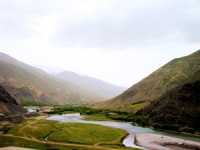Water sharing between Central Asian countries has been conflicting for quite a long time already.
Transboundary river basin management regimes: the Amu Darya basin case study
This report of NeWater project gives an overview of transboundary issues in the Amu Darya River Basin in Central Asia. Water management in the Amu Darya basin is heavily influenced by the transboundary course of the river. In addition, water management is closely intertwined with the agricultural and energy sectors in the region, which remains in a state of transition towards new political stability and statehood after the collapse of the Soviet Union in the early nineties. As a result of the prevailing cotton monoculture, water bodies in this region are in a dire environmental state. These water quality issues, but above all water use rights allocation among the riparian states creates a constant potential for conflict in the region. Agreements have been achieved at the international level over the past year, in many cases with facilitation of the international donor and NGO community. Still, there are considerable shortcomings due to, among other factors, the inefficient and inadequate exchange of information among the riparian states, lacking transparency and involvement of relevant stakeholders of policies at the national and international level as well as the dominance of old structures, networks and mindsets. This report aims to provide an introductory description of these factors as well as a brief assessment of the adaptiveness of the regime in the Amu Darya basin as a basis for the further work in NeWater [NeWater research is aimed at identifying new approaches to more adaptive strategies in water resource management].





